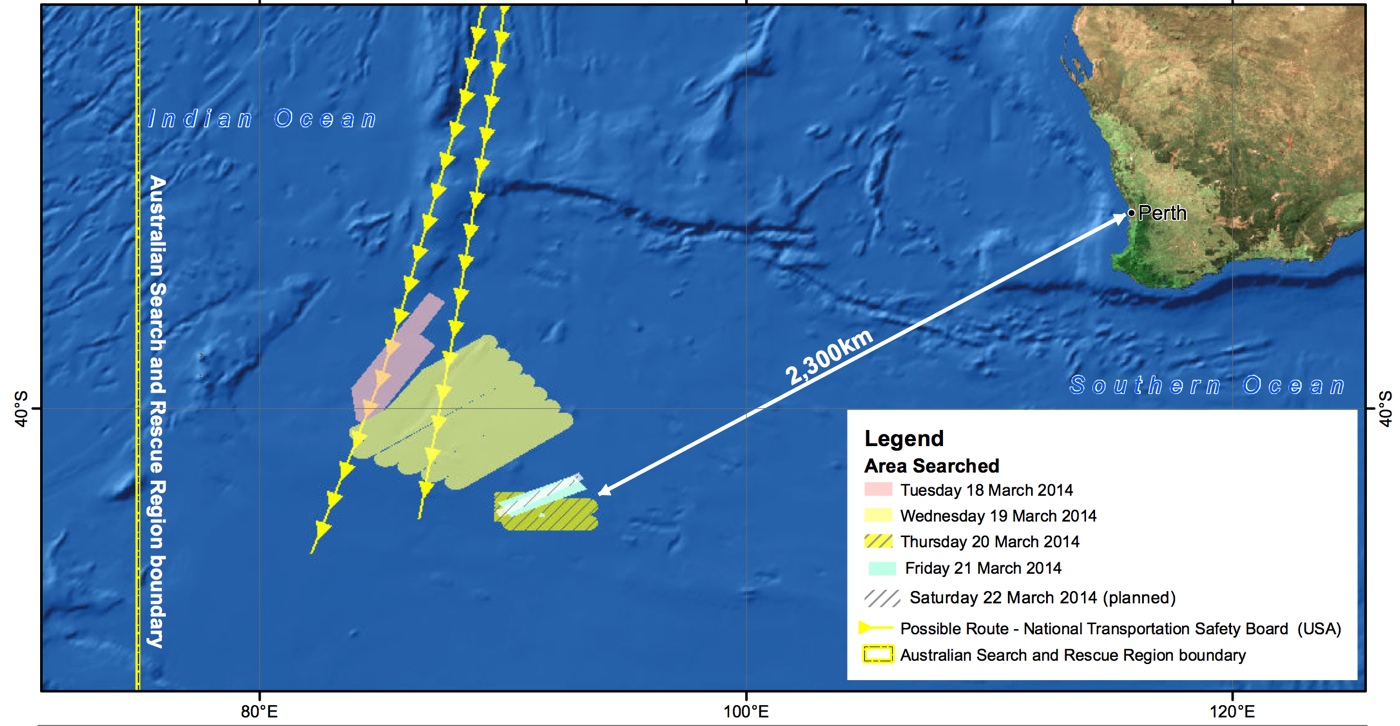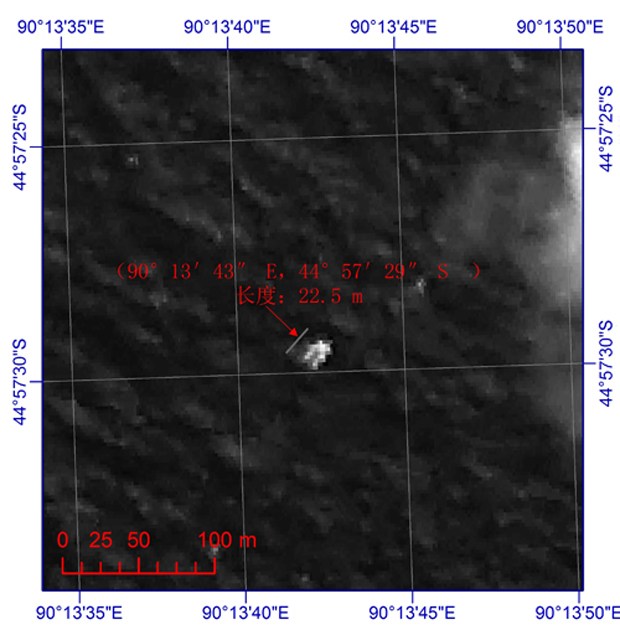French Satellite Spots Objects in Search for Malaysian Flight 370

A third set of images, this one from a French satellite, show potential objects floating in the southern Indian Ocean that could be linked to Malaysian Airlines Flight 370, which has been missing since March 8, when it disappeared from radar screens.
The images, clarified by the French ministry as satellite-generated radar echoes, or radar signals that give information about an object's location, do not seem to have been publicly released, though they were immediately sent to the Australian Maritime Safety Authority (AMSA), which is now coordinating the plane search near Perth, according to the Malaysian Ministry of Transport.
The newly spotted object or objects were floating about 1,430 miles (2,300 kilometers) from Perth, Australia, according to the Sunday Times, a Singapo

re news site. [Facts about Malaysia Flight 370]
Satellite images from both China and Australia have revealed floating objects that may be Flight 370 debris in the same area over the past week.
The Malaysian Ministry of Transport didn't provide any other details about the French image or images or the object's location, the New York Times reported.
Even so, the image or images may solidify the idea that the plane fell into the ocean off Western Australia, after radically departing from its route from Kuala Lumpur to Beijing, according to the Times.
Get the Space.com Newsletter
Breaking space news, the latest updates on rocket launches, skywatching events and more!
The new image will also be compared with the past images of possible debris. The March 16 Australian satellite images of possible debris, which were released on March 20, showed two objects possibly related to the missing Malaysian aircraft, according to the AMSA. The objects (marked by arrows in the satellite images) measure up to 79 feet (24 meters) long and 16 feet (5 m) long, respectively, according to a Reuters report. (Searches in the area have yet to turn up the floating objects.)
The more recent Chinese satellite photo was captured by one of China's Earth-observation satellites on Tuesday (March 18) and released Saturday (March 22) by China's State Administration of Science, Technology and Industry for National Defense (SASTIND). The image showed a large object — about 72 feet (22 m) by 43 feet (13 m) — some 75 miles (120 km) southwest of the location of the possible debris sighted by the Australian satellite, according to SASTIND officials. (The AMSA plotted the object and though its location fell within Saturday's search area it was not sighted, the AMSA reported.)
The new French satellite photo is the latest clue in the ongoing search for Malaysia Airlines Flight MH370, a Boeing 777 jet; the search effort has focused on two vast swaths of ocean, one stretching north from Malaysia toward Kazakhstan in Central Asia, and another stretching south across the Indian Ocean.
Today's search involved eight aircraft, including a U.S. Navy P-8 Poseidon, along with the Royal Navy's HMAS Success, covering an area of nearly 23,000 square miles (59,000 square km) across two search regions within the Australia Search and Rescue Region in the southern Indian Ocean southwest of Perth.
The search will continue Monday, with the Chinese military Ilyushin IL-76 aircraft and Japanese P-3C aircraft expected to join the effort, according to the AMSA.
This article was provided by Space.com sister site Live Science. Follow Jeanna Bryner on Twitter and Google+. Follow us @livescience, Facebook & Google+. Original article on Live Science.
Join our Space Forums to keep talking space on the latest missions, night sky and more! And if you have a news tip, correction or comment, let us know at: community@space.com.











